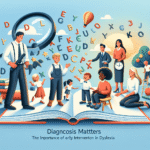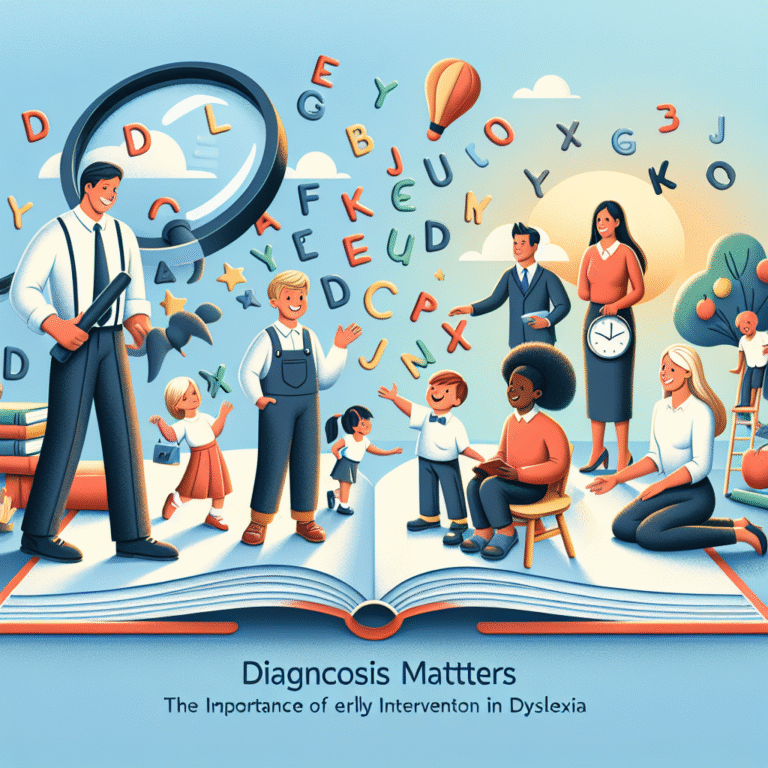
Bridging the Gap: Innovative Therapies for PTSD and Their Impact on Healing
Introduction
Post-Traumatic Stress Disorder (PTSD) is a complex and debilitating condition that affects millions of people worldwide, with its roots often stretching deep into traumatic experiences that leave lasting scars on the psyche. Traditional therapies like Cognitive Behavioral Therapy (CBT) and exposure therapy have helped many, but they don’t work for everyone. As our understanding of trauma and its effects deepens, innovative therapies are emerging that bridge the gap between traditional methods and holistic healing, bringing hope to those lost in the shadows of their memories.
In this article, we will explore groundbreaking approaches that are redefining the landscape of PTSD treatment, highlighting their effectiveness and the profound impact they can have on the healing journey. Whether you’re a mental health professional, a caregiver, or someone seeking to understand PTSD better, this comprehensive exploration of "Bridging the Gap: Innovative Therapies for PTSD and Their Impact on Healing" will provide valuable insights and inspire meaningful conversations about mental health.
Understanding PTSD: The Need for Innovative Therapies
What is PTSD?
PTSD is a mental health condition triggered by experiencing a traumatic event. Individuals may experience flashbacks, severe anxiety, and uncontrollable thoughts about the event. According to the National Center for PTSD, approximately 7-8% of the population will experience PTSD at some point in their lives, underscoring the urgent need for effective treatment options.
The Limitations of Traditional Therapies
While conventional methods like CBT and medication have proven beneficial for many, they often fall short for individuals with complex trauma or co-occurring disorders. As discussed in a study by the American Psychological Association, therapy’s effectiveness hinges on the patient’s ability to engage fully with the process, which can be particularly challenging for those with PTSD.
Bridging the Gap: Innovative Approaches to Healing
To effectively address PTSD, we need therapies that integrate scientific rigor with compassion and understanding. Let’s delve into some of the innovative therapies that are currently transforming the treatment landscape.
Innovative Therapies in Action
1. Eye Movement Desensitization and Reprocessing (EMDR)
What is EMDR?
EMDR is a psychotherapy technique that has gained recognition for its efficacy in treating PTSD. The process involves patients recalling distressing events while the therapist directs their eye movements in a specific pattern. This dual focus promotes the processing of traumatic memories and reduces their psychological impact.
Case Study: Susan’s Journey
Background: Susan, a 32-year-old military veteran, experienced severe PTSD after returning from deployment. Traditional therapies had left her feeling frustrated and hopeless.
Application of EMDR: After several EMDR sessions, Susan reported a significant decrease in flashbacks and anxiety. Her ability to engage in daily activities improved profoundly, allowing her to reconnect with family and friends.
Analysis
Susan’s case illustrates EMDR’s potential to enable effective trauma processing without the distress often associated with traditional therapeutic methods. As we look to bridge the gap with innovative therapies for PTSD, EMDR serves as a beacon of hope for many.
2. Neurofeedback
What is Neurofeedback?
Neurofeedback, also known as EEG biofeedback, is a cutting-edge approach that trains individuals to self-regulate brain activity. This therapy can help those with PTSD by targeting dysfunctional brain patterns associated with trauma responses.
Case Study: Mark’s Transformation
Background: Mark, a 28-year-old firefighter, faced nightmares and hypervigilance following several traumatic calls.
Application of Neurofeedback: After a series of sessions, Mark learned to control his brain’s stress responses and reported significant reductions in anxiety levels and improved sleep quality.
Analysis
Mark’s transformation highlights neurofeedback’s power to create lasting change by altering one’s neural pathways. This innovative approach exemplifies how technology can bridge the gap in PTSD treatment.
3. Somatic Experiencing (SE)
What is Somatic Experiencing?
Somatic Experiencing is a body-centered approach aimed at releasing trauma that is "stuck" in the body. By focusing on physical sensations and cultivating awareness, individuals can reconnect with their bodies and release accumulated stress and tension.
Case Study: Anna’s Healing
Background: Anna, a 45-year-old survivor of domestic violence, struggled with chronic pain and emotional numbness post-trauma.
Application of SE: Through guided sessions, Anna learned to identify and release somatic symptoms associated with her trauma, leading to a major improvement in both mental and physical health.
Analysis
Anna’s story exemplifies how trauma can manifest physically and underscores the importance of addressing these somatic symptoms as part of a comprehensive healing strategy. SE effectively bridges the gap by integrating the body and mind in the healing process.
The Role of Holistic Practices
4. Art and Expressive Therapies
Understanding Art Therapy
Art therapy leverages creative expression as a healing tool. By working through artistic mediums, individuals can express emotions that might be difficult to articulate verbally. This therapy is particularly beneficial for those with PTSD, who often struggle with verbalizing their experiences.
Case Study: Rachel’s Art Journey
Background: Rachel, a 25-year-old woman, found it difficult to express her feelings about her trauma from a car accident.
Application of Art Therapy: Through her artistic expression, Rachel visually processed her trauma, allowing her to confront feelings of fear and hopelessness.
Analysis
Rachel’s case demonstrates that bridging the gap with innovative therapies like art therapy doesn’t just aid in emotional expression but also empowers individuals to reclaim their narratives.
5. Nature-Based Therapies
What are Nature-Based Therapies?
Nature-based therapies involve outdoor activities such as gardening, wilderness therapy, or eco-therapy. These methods harness the healing power of nature to foster emotional and mental well-being.
Case Study: John’s Wilderness Experience
Background: John, a 40-year-old veteran, experienced severe anxiety and social withdrawal after combat.
Application of Wilderness Therapy: Participating in a guided wilderness retreat helped John reconnect with his surroundings and himself, leading to increased self-esteem and reduced anxiety.
Analysis
John’s experience underscores the profound impact nature can have on mental health, illustrating how innovative therapies can bridge the divide between the urban and natural worlds to promote healing.
Data and Insights
Summary of Innovative Therapies
| Therapy Type | Key Features | Effectiveness |
|---|---|---|
| EMDR | Recall trauma with bilateral stimulation | Significant reduction in PTSD symptoms |
| Neurofeedback | Self-regulation of brain activity | Improved brain function and emotional regulation |
| Somatic Experiencing | Body-centered focus on trauma | Relief from somatic symptoms of trauma |
| Art Therapy | Creative expression to articulate feelings | Enhanced emotional clarity and processing |
| Nature-Based Therapies | Interaction with natural environments | Decreased anxiety and improved well-being |
Bridging Data Gaps
Research indicates that these innovative therapies can yield substantial benefits, but their acceptance within the broader mental health community varies. Embracing these modalities offers new opportunities for practitioners to provide more individualized treatment.
Conclusion
As we explore the diverse landscape of innovative therapies aimed at treating PTSD, the message becomes clear: there is no one-size-fits-all approach to healing. Every individual’s journey is unique, and our understanding of trauma must be as dynamic and multifaceted as the people we seek to help.
"Bridging the Gap: Innovative Therapies for PTSD and Their Impact on Healing" reveals that embracing creativity, nature, and technology in treatment not only enhances therapeutic outcomes but can also empower individuals to reclaim their lives. As we continue to evolve in our understanding and practice, it is essential to remain open to the possibilities these therapies present and to advocate for their integration into mainstream treatment protocols.
Actionable Insights
- Stay Informed: Research and learn about the newest therapies available.
- Explore Options: Consult with a mental health professional about incorporating innovative approaches into your healing journey.
- Share Your Journey: Engaging in community forums can provide support and encouragement for others facing similar challenges.
FAQs
1. What is PTSD?
PTSD (Post-Traumatic Stress Disorder) is a mental health condition triggered by experiencing or witnessing a traumatic event.
2. How can innovative therapies help beyond traditional methods?
Innovative therapies cater to individual needs and often combine mind-body approaches, addressing issues that traditional methods may overlook.
3. What is EMDR, and how effective is it?
EMDR is a therapy that helps individuals process traumatic memories through guided eye movements, showing significant effectiveness in reducing PTSD symptoms.
4. Are there any side effects of neurofeedback?
Neurofeedback is generally considered safe, but occasional side effects can include fatigue or mild headaches.
5. How do I choose the right therapy for PTSD?
Consulting a qualified mental health professional can help determine the best therapeutic approach based on individual circumstances and needs.
By integrating innovative therapies, we are not only bridging the gap but also fostering a comprehensive understanding that healing is possible, pushing the frontier of what it means to recover from trauma.










